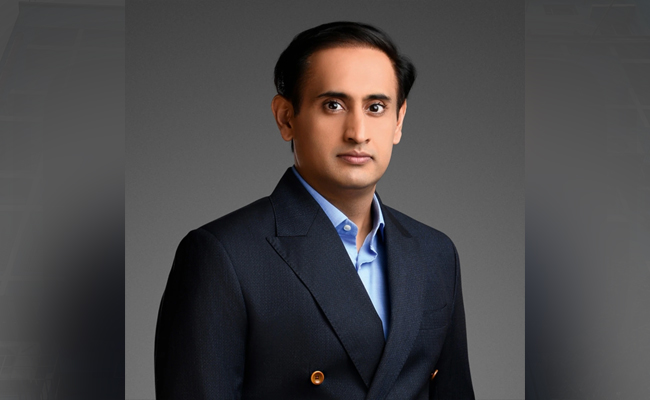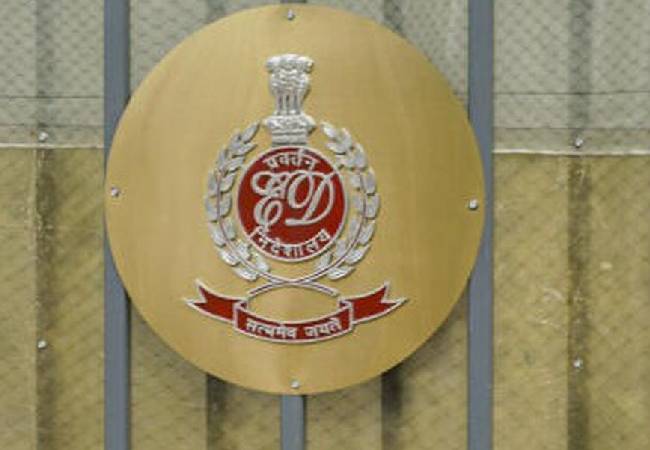New Delhi: India Today’s anchor and News Director Rahul Kanwal found himself at the center of a social media storm following his remarks on perceived bias in the US media’s coverage of the ongoing presidential election.
In his post, Kanwal highlighted what he saw as clear polarization within the American media, using CNN and Fox News as examples. He claimed that CNN made it appear as though Kamala Harris was receiving widespread support from independents and even some Republicans, while Fox News portrayed Donald Trump as holding a winning edge. Kanwal added that “neutral viewers” might be left confused over which channel represented the real scenario, emphasizing that journalists should leave personal biases aside and aim to present a balanced view.
However, Kanwal’s criticism of US media immediately sparked backlash from Indian social media users, who pointed to the irony in his remarks given India Today’s own reputation. The channel, along with others, is often accused of pro-government bias, and users wasted no time in calling out what they saw as Kanwal’s double standards.
One user sarcastically remarked that, by watching India Today’s coverage, “one would think Modi is winning not only in India but in US and Canada as well,” mocking the channel’s alleged inclination to support the ruling BJP. The comment clearly highlighted what many viewers see as an overt bias in Indian media coverage that often portrays Prime Minister Narendra Modi and the BJP in a favorable light, regardless of the topic.
Another comment urged Kanwal to “start with himself” if he truly believed that journalists should leave personal biases outside the newsroom. The commenter implied that Kanwal’s own reporting was far from neutral and questioned the integrity of his critique of American journalists. This response echoed the sentiment of many others, who felt that Kanwal’s post ignored the role he himself plays within the alleged “Godi Media,” a term used to describe Indian news channels perceived to be compliant with government narratives.
Further, one viewer took issue with Kanwal’s focus on US media, questioning why he seemed more concerned with perceived biases abroad than addressing the issues in his own country. “Godi media talking about media bias in the US?” the comment read. “Why don’t you guys do your own job honestly first rather than working against your own country and fooling your audience, then worry about other countries?” This comment struck a chord with other users, who agreed that Kanwal’s focus seemed misplaced, especially given the state of Indian media.
In a similar vein, another comment read, “Thankfully in India, all channels sing only one song, leaving no scope for any confusion. And dude, you talking about personal biases is a little too much.” The remark appeared to address the lack of diversity in perspectives among Indian news outlets, suggesting that most channels convey a single narrative favoring the government, leaving no room for viewers to experience confusion over where each network stands.
Several commenters went further in their criticisms, openly questioning Kanwal’s credibility as a journalist. One user bluntly stated, “What a joke, when you guys do the same during our elections. Take ownership of what you say because soon media will be considered a platform for only comedy.” This comment highlighted the growing skepticism viewers feel toward the news media, warning that unless journalists start to practice what they preach, the media’s credibility may be beyond repair.
Another comment directed at Kanwal was especially sharp, calling him “spineless” and accusing him of operating on instructions from his employers rather than covering real issues independently. “Firstly, Mr. Rahul Kanwal, think about your honesty in your profession. You’re acting as per your employer's instruction, not on real issues. Spineless man, don’t give lectures to others,” the user wrote, suggesting that Kanwal’s journalistic independence was compromised.
Let the Truth be known. If you read VB and like VB, please be a VB Supporter and Help us deliver the Truth to one and all.
New Delhi (PTI): The loco pilots' union has alleged that various railway zones are manipulating the working hours of train drivers by falsely entering duty breaks during their 12 to 16-hour-long trips in the online Crew Management System (CMS) to hide their overutilisation.
As per railway norms, a loco pilot cannot be asked to work more than 9 hours at a stretch and no more than 11 hours in total from sign-on to sign-off. Since 2021, the Safety Department of the Railway Board has instructed all zonal railways that 80 per cent of trips should be completed within the 9-hour limit.
The Railway Ministry had earlier stated that it has not only initiated aggressive recruitment of loco pilots but also created several amenities for them, including urinal facilities in over 900 locomotives, air-conditioning systems in over 7,000 locomotives, and upgraded all 558 running rooms across the rail network.
The All India Loco Running Staff Association (AILRSA) stated that safety regulations prohibit overburdening loco pilots with excessive duty hours. They alleged that rail administrations are regularly violating these rules to compensate for a 15–20 per cent staff shortage.
"Though this illegal practice is happening in many divisions and zones, we have started by raising the issue with the General Manager of East Central Railway (ECR). We have submitted a memorandum compiling several issues that affect loco pilots' working conditions, including the false trip break," said Ashok Kumar Raut, General Secretary of AILRSA.
The ECR has not responded to the allegations.
However, following Raut's representation, one of ECR's divisions, Dhanbad, issued a circular dated July 15, 2025, warning of strict action against the false insertion of duty breaks between sign-on and sign-off in the CMS.
"A direction is being issued to all to not break duty hours between the sign-on and sign-off of the crew while registering it in CMS (Crew Management System). If it is happening in any crew lobby, it must be stopped immediately. If such cases are found, strict disciplinary action will be taken," the circular stated.
Raut explained that lobby officials record the sign-on and sign-off times of loco pilots in the CMS when their shift starts and ends, respectively. However, in cases where a loco pilot works for more than 12 hours, contractual staff at the lobby are allegedly inserting fake duty breaks -- ranging from 45 minutes to 2 hours -- on verbal orders from senior officials to conceal overutilisation.
Each railway division submits monthly crew working hours data to the Railway Board in a fixed format. These duty breaks are reportedly used to avoid detection of excessive working hours, which violates operational safety norms.
"This illegal and unsafe practice of inserting duty breaks in the system is being done on the verbal orders of some senior officials, such as the Chief Traction Loco Controller and Chief Crew Controller. Railways has outsourced CMS data entry work to private personnel, and these officials instruct them to insert such breaks," Raut alleged.
He added, "I have gathered data from some divisions on illegal trip breaks by lobby staff. In May and June 2025, in the Dhanbad division alone, there were 2,719 such cases; 1,883 in the Pandit Deen Dayal Upadhyay Nagar division; and 785 in the Danapur division."
He also claimed that the Samastipur and Sonpur divisions manipulated working hours in 304 and 83 cases, respectively.
Earlier this year, in April, South Central Railway reviewed CMS data on loco pilots’ working hours and found that, in 545 cases in the Secunderabad division, 42 in Vijayawada, 26 in Guntakal, three each in Guntur and Nanded, and one in the Hyderabad division, goods train loco pilots worked between 13:55 and 14:00 hours but were compelled to feed incorrect times to hide actual duty hours.





_vb_79.jpeg)